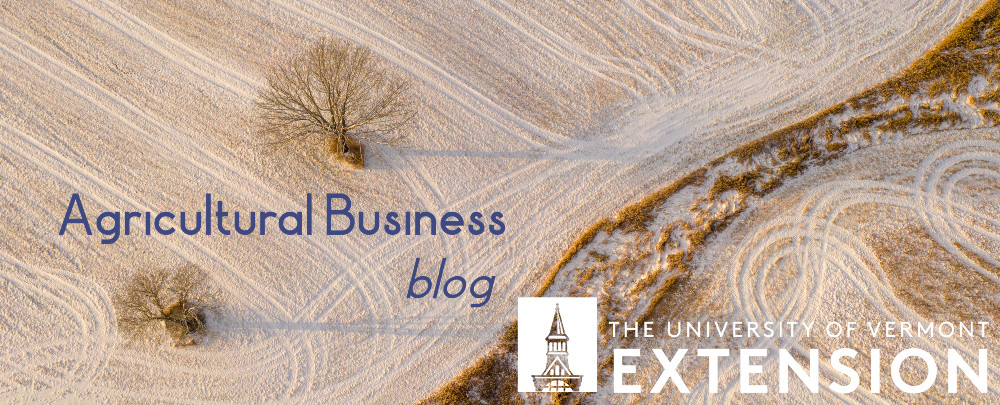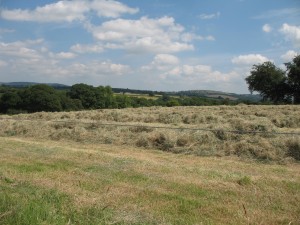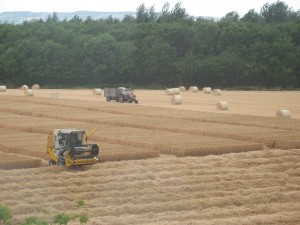The weather is back to a good combination of moisture, sun, and warmth to get that grass growing again. Some second cut silage and wrapped round bales getting harvested. Tillage farmers are working to complete the combining of the winter barley. Everyone is quite pleased with the yields and the grain weight per bushel. Most of the straw is getting baled and put away also. Spring barley is following soon, a bit early due to July’s heat. I have not seen much combining before, it was interesting yesterday to see little whirlwinds blowing the straw up 20-30 feet into the air. It was a good dry day.
Dairy and livestock farmers are happy to see the grass growing again, but are still concerned about how much stored feed they will have for this coming winter. Teagasc has a big push going on to encourage farmers to inventory their feed, estimate how much they will need, and make plans now to cull animals and to line up feed to buy.
Quite a variety of research goes on here at Oak Park. From plant breeding, variety trials, to genome mapping of perennial ryegrass to a GM potato study.
Yesterday I had lunch with 2 people who are plant researchers here. Both were studying fungus diseases of food crops: wheat and potato. In order for a fungus to infect a plant, the leaf surface must be damp. The dry weather in July was great for the plants, but bad for the fungus studies! The person who worked with the GM potato study had done enough watering to last her for a while.
The GM potato study here is part of a 22-nation study of varieties that are resistant to late blight. Late blight was the disease that caused the loss of several years of crop in the 1840s and ’50s, and the famine that killed a million-and-a-half, and led to the emigration of the same number of Irish people. http://www.teagasc.ie/crops/potatoes/gm.asp
Genetically modified crops cannot be grown in the European Union. This ‘AMIGA’ project needed special approval. There are 15 EU member nations participating. You can read about it at www.amigaproject.eu and about the potato research at www.gmoinfo.ie.
There are informational panels by the experimental plots. To grow potatoes here, it takes up to 15 applications of protective fungicides per growing season. Total value of potato crop losses across the EU is estimated to be $1.3 billion per year. ‘We are not advocates of GM, but we are advocates of public research. We are not producing GM potatoes for production or commercial purposes. Our role is to investigate the potential negative and/or positive impacts of GM technology in regard to this specific GM variety and then inform stakeholders and the general public as to conclusions drawn based on an Irish-specific research study.’
Farmers Journal. There is a good weekly paper here, ‘Irish Farmers Journal.’ In the last couple of weeks these items caught my attention and got me to thinking. http://www.farmersjournal.ie
• 3 August, 2013, page 7. The article is ‘July milk powers on.’ The EU dairy marketing quota runs from April 1 to March 31.
o Each nation has a quota, each coop has a quota, and each farm has a quota of quantity of fat. If the country is over quota for the year, your cooop is over quota, and your farm is over quota, you pay a fine based on how much you were over. So famers keep an eye on how they are producing this year compared to last.
o This article says that July 2013 milk supplies have been 8-10% ahead of last year. The nation was 2.6% under quota at the end of June.
o There is a report on how different regions of the country are producing, and even with the late spring, the east is making a lot of milk.
o The article wonders if some farmers will risk paying a fine of half the milk price in the fall.
o The article reports that ‘some larger operators in the east that would not be able to pay (the over-quota fine) have already switched to once a day milking to reduce supply.’
• 3 August, 2013 page 8. The article is ‘Rabobank’s Henry calls for dairy industry consolidation.’
o ‘Rabobank is the largest lender to the Irish dairy industry.’ Funding both a national dairy exporting service, and major dairy coops.
o The EU dairy marketing quota is scheduled to end in 2015. And the national goal is to make more milk and to export more dairy products. ‘..asked a sticky question about where and how is all the extra milk going to be sold?’ Under the labels of individual coops- like Dairygold? Or under the Irish national brand- Kerrygold? There was no firm answer, but the answer will vary by product.
o There are big supermarkets here from Britain and Germany. A big question is what is the source of their fluid milk, butter and cheese? These supermarkets are major buyers of product in the EU (like Walmart in the US). Will these buyers be able to tempt coops to compete with the Irish national brand in the future?
One of the big dairy coops is now building a large new processing plant. It is located near a new motorway (interstate highway) and near a deep-water port. The plan is to make butter and powder for export.
• 3 August, 2013 page 14. ‘Danger to environment by Japanese knotweed is highlighted in (Senate).’
o We know this weed as knotweed or Mexican bamboo. It grows mainly along rivers and brooks. And as we learned in the floods 2 years ago, that it is transported downstream in high water, where the roots that were broken in transport easily take root in the fresh silt that was deposited. http://njaes.rutgers.edu/weeds/weed.asp?japaneseknotweed
o Here in Ireland it is moved by seed, along the roadsides as crews trim the hedges.
o ‘This plant is included in the list of the 100 most invasive alien species of the world.’
o ‘My department is keeping abreast of initiatives currently underway in Britain using a specific insect to control Japanese knotweed.’
o I haven’t seen the plant here in Ireland, but there is a lot of it in Vermont.







